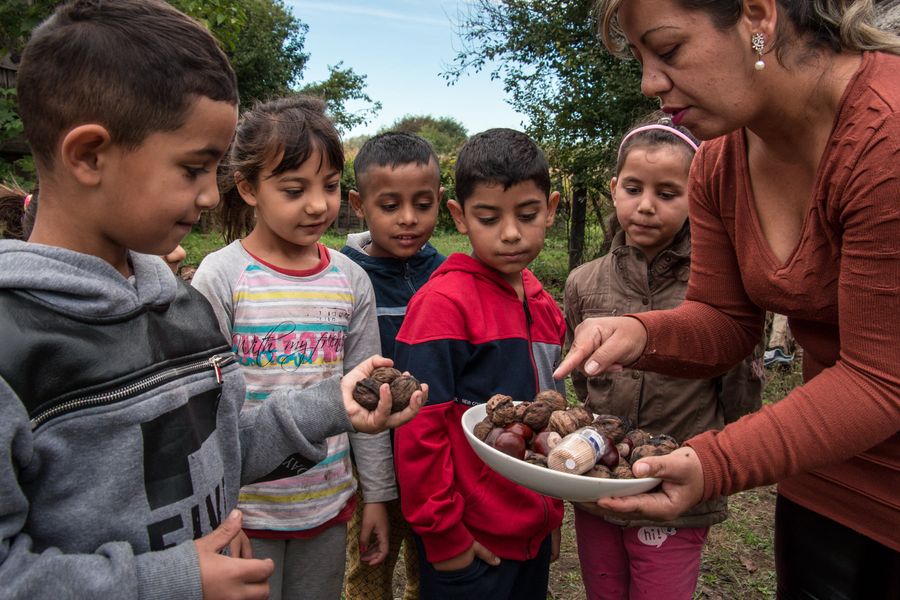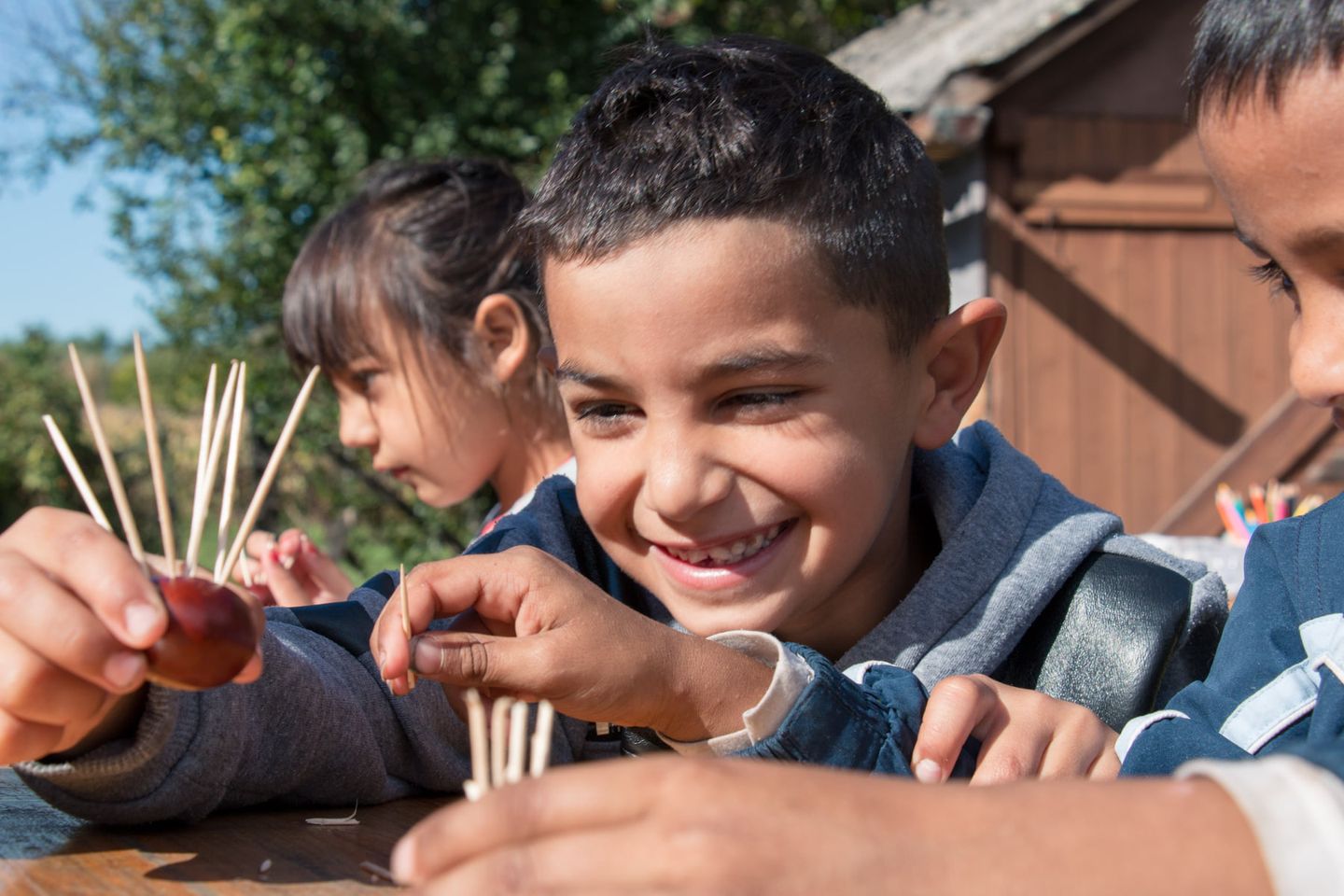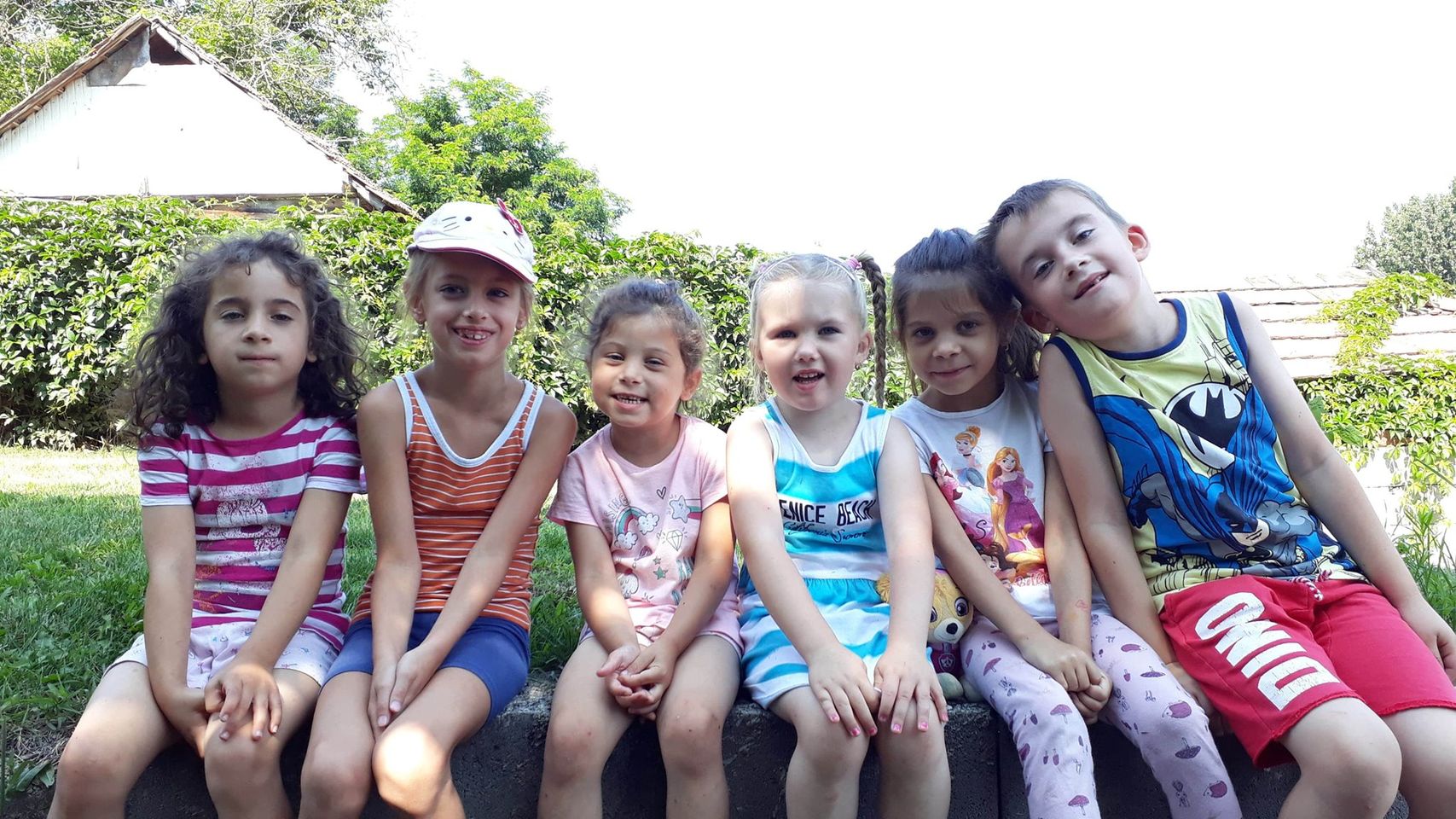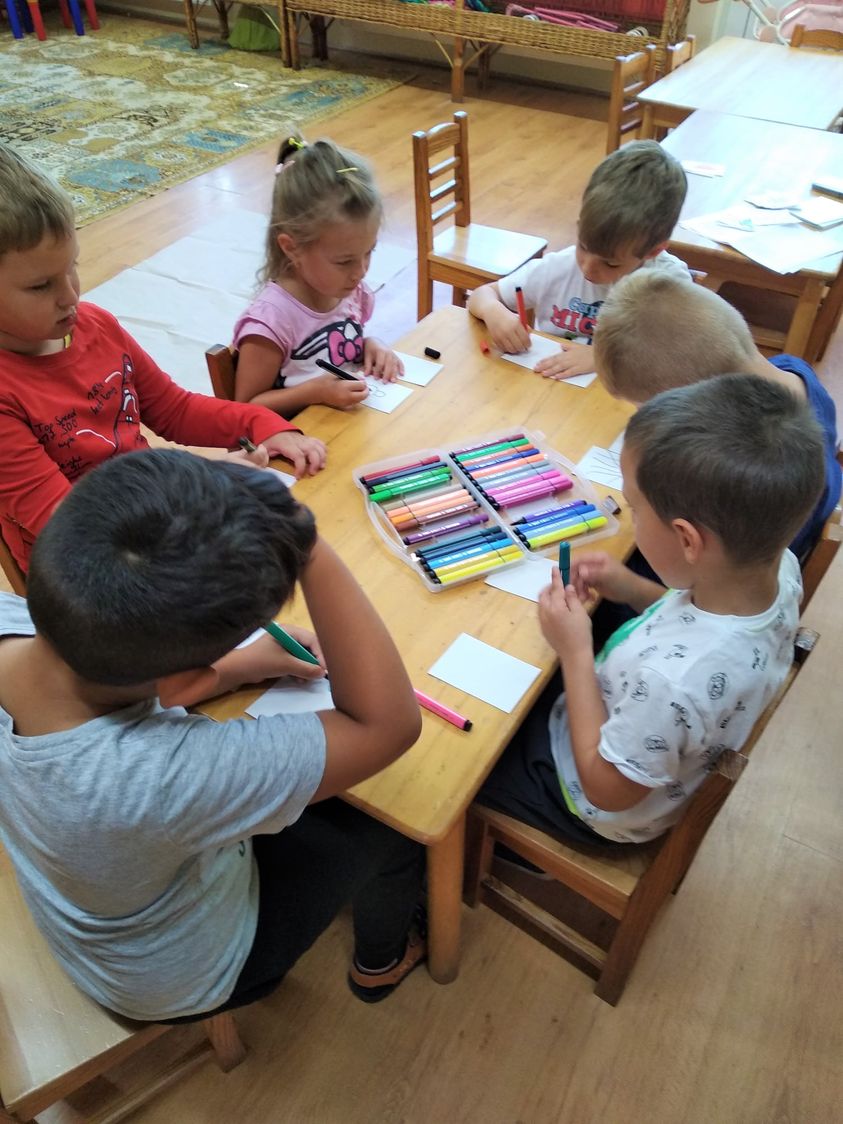Learning through Play in Disadvantaged Communities in Hungary, supported by the LEGO Hungary Foundation
In the LEGO Hungary sponsored project, we worked with 45 children through joyful play activities, like storytelling, drawing, constructing, role-playing games, five days a week for six months. The group included children of 5-7 years old, coming principally from disadvantaged Roma communities. Special attention was paid to visuomotor coordination, symbolic play, storytelling, vocabulary building. The project locations included: Napkor, Nyíregyháza, Nyírmihálydi, Tiszavasvári in the Eastern part of Hungary.
We conducted a skills assessment with the children at the beginning and at the end of the project. At the beginning, we witnessed poor storytelling, poor vocabulary, misused placeholders, and conjunctions. By the end, children’s communications skills improved intensively. Their vocabulary developed, those who could only express their thoughts with a few words or short broken sentences initially, now could speak confidently on their own and with fluency. In storytelling, 75% of children could tell a story that had a beginning, an end, a storyline, and several characters. The children, without exception, understood the questions asked perfectly and answered them right.
While there were significant differences between children at the initial skills assessment, they caught up with each other by the end of the project. By now, they seem to feel safe and confident. They have become communicative, not at all embarrassed, not even because of the online situation. They seem to trust themselves. There is no constant asking back (“Is it good this way?”), they answer the questions confidently, or in some cases, they simply declare that they do not know the answer.
In summary, all the children in the project have shown great progress in communications, including storytelling, verbal expression, understanding and answering questions, following instructions, along with visuomotor skills needed for pencil holding, following the teacher writing on the board, etc. Their self-confidence increased significantly and the social interaction within the children group has become more balanced.
Please, see the results of the project in an infographics below.





